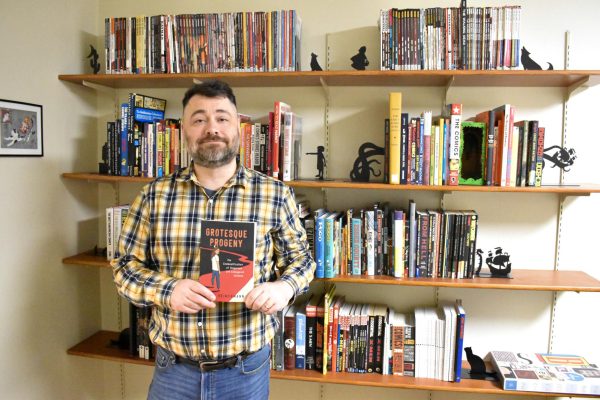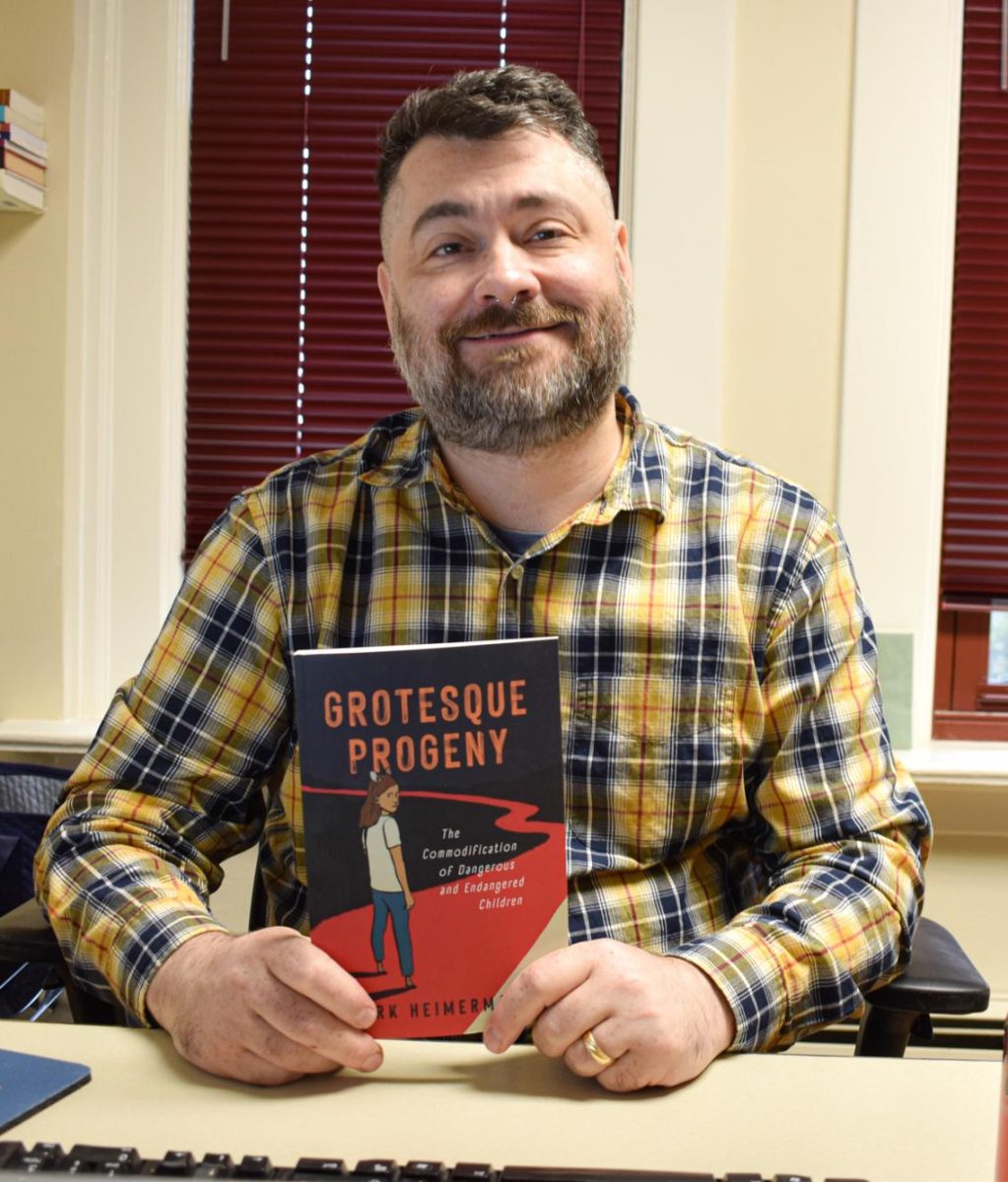On November 20, Mark Heimermann, Ph.D., assistant professor of English, released his book, Grotesque Progeny: The Commodification of Dangerous and Endangered Children. The book is available through the publisher, University Press of Mississippi, along with other vendors, including Amazon, Barnes & Noble, Longfellow Books and University of British Colombia Press.
Grotesque Progeny explores how society views children as different from adults and how these perceptions are reflected in fiction, as explained in the blurb:
In contemporary Western society, childhood appears more protected than ever to the casual onlooker. Yet, we are increasingly fascinated by narratives in which children are depicted as unsettling beings, both dangerous and endangered, sometimes chaotic or even evil. In Grotesque Progeny: The Commodification of Dangerous and Endangered Children, Heimermann argues that these representations reflect cultural anxiety regarding a shifting conception of youths from emotional assets to economic ones.
Heimermann analyzes literature and comics geared toward adults in his book. “How culture thinks about childhood is driven by adults,” he said. “Adults are the ones thinking through childhood.” However, this made it harder to find a spot in the published world, as many childhood scholars write about fiction aimed at children and young adults. Heimermann persisted, though, and his patience paid off when the prestigious University Press of Mississippi, known in part for works related to children’s literature, published Grotesque Progeny.
After reading a lot of speculative fiction, Heimermann noticed a pattern of “weird kids”—children who were not seen as fully human. In some cases, the authors portrayed them as animal-human hybrids or clones. Heimermann originally explored the concept behind Grotesque Progeny in his dissertation. The book form gave him the chance to expand on the ideas in each chapter.

One of these human-animal hybrids—a girl with deer features—appears on the cover. The cover artist took inspiration from a Jeff Lemire comic books series, Sweet Tooth. Gus, the protagonist in the comic book series, is a deer-human hybrid child in a post-apocalyptic world which Heimermann analyzes in his book.
A deer-human hybrid wasn’t the first idea for the cover art. Heimermann originally pitched ideas like children coming off a conveyer belt.
One of the first steps in cover design is choosing an artist. The press sometimes selects an illustrator based on covers that have a style similar to the author’s ideas for their own book cover.
Heimermann talked with the press about covers that caught his eye and what he liked about them. The cover style of one book, Queer Oz by Tison Pugh, matched the overall look Heimermann wanted. He liked the color and clean lines, although he wanted something less vibrant to parallel the content of his book.
Heimermann didn’t expect the press to choose Lindsey Cleworth, the cover artist of Queer Oz, but that’s exactly what happened. His book cover, along with several drafts, are posted on her website.
Publishing and cover art are only two parts of an extensive process behind writing a book. Writing itself naturally requires ample time, energy and dedication.
For many people, the most challenging part of writing is that they “feel it’s all going to spring to them fully formed.” With that mindset, Heimermann said, “people are just not going to write.” He struggled with this himself. “I wasn’t originally carving time out for myself to write,” he said. He suggests making the writing process attainable by setting goals. For example, a day during the research process might involve reading at least one academic article. Later, he’d spend at least an hour a day writing and revising.
Additionally, he says writers should be able to take feedback on work that’s close to them. The press might allow writers to rationalize not incorporating certain feedback, but they must be able to think about it constructively and decide whether it will ultimately help them achieve their goal or not.
Grotesque Progeny wasn’t Heimermann’s first taste of the publishing world, though.
Along with Brittany Tullis, Heimermann served as a coeditor of an anthology titled Picturing Childhood: Youth in Transnational Comics, which was nominated for the Eisner Award for Best Academic/Scholarly Work in 2018. His essay, “The Grotesque Child: Animal/Human Hybridity in ‘Sweet Tooth’” made an appearance in the anthology, and a revised version became the first chapter of Grotesque Progeny.
Now that he’s finished both Picturing Childhood and his latest release, Grotesque Progeny, Heimermann has the chance to consider a future book-length project.
“One project I’m considering is diving more deeply into Jeff Lemire’s work,” Heimermann said. “His oeuvre often engages traditional ideas of childhood but also thinks about how childhood might be changing in interesting ways.”


